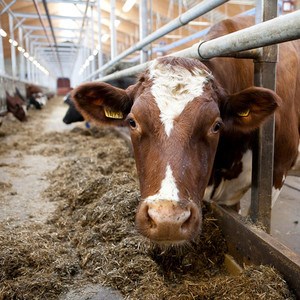Facts:
The project is financed by the Swedish research council Formas.

The overall objective of this project is to minimize the need for human-edible feed in dairy production and at the same time reduce enteric methane emission, with maintained good animal health and performance.
Livestock consume human-edible feeds which could feed about 3.5 billion humans. Also, about 40% of the grain produced in the developed countries is fed to cattle. The increasing global demand for human food requires a change of the production towards a more limited use of human-edible feed in the dairy cow diet. Ruminants have a highly specialized ability to convert energy and nitrogen, in forage and other fibrous compounds, into milk and other products which should be utilized. The project will be performed at the SLU research center, Ultuna. We will determine variation in forage intake capacity in a large number of early lactating cows and relate the data to a number of parameters reflecting the metabolic status. Furthermore we will determine to what extent substitution of grain with glycerol in the diet reduce methane emission and phosphate excretion. We will determine how cows phenotypically selected for high or low forage intake capacity in early lactation perform during a complete lactation. The size of the genetic variation in forage intake will be estimated and genome regions important for its regulation will be identified and genomic breeding values for forage intake estimated.
Kjell Holtenius, kjell.holtenius@slu.se
The project is financed by the Swedish research council Formas.